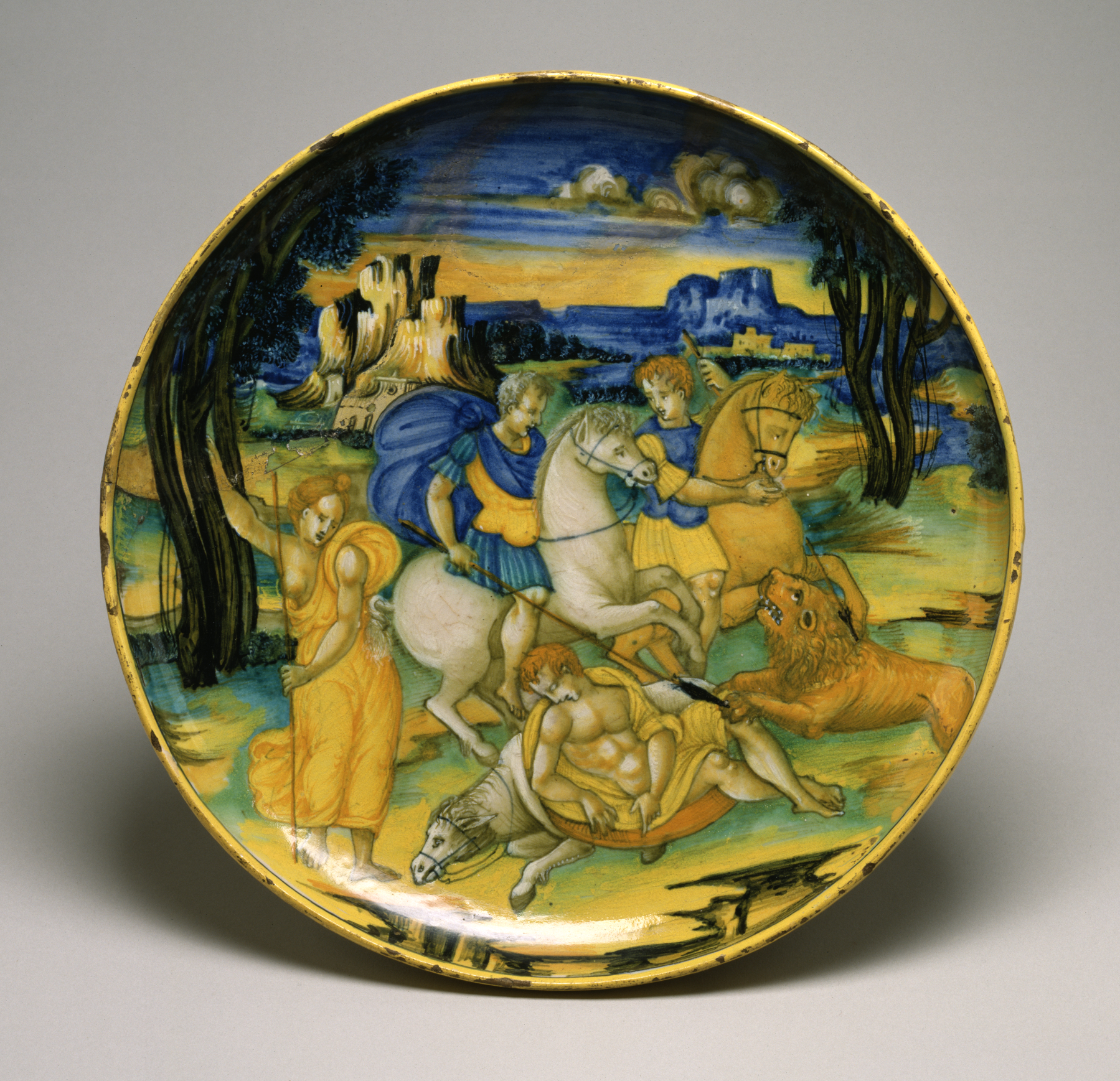Dish with Lion Hunt
(Renaissance Europe )
In the center of this dish, two horsemen direct their spears at a lion whose front paws are on the left knee of another rider lying with his dead horse in the foreground. To the left, a woman stands and holds a long staff. This dramatic scene was taken from an engraving by Giovanni Antonio da Brescia (1490-1525) that reproduced a relief from an ancient Roman sarcophagus displayed in Saint Peter’s Basilica in Rome. The plate has been attributed to Baldassare Manara, one of the most prominent maiolica painters of the sixteenth century, who often adapted compositions from popular prints into his wares. In this composition, the painter adds new character to the original engraving by separating the figures for greater clarity, and expanding the background to include a landscape filled with rocks, trees, and strange buildings. To the artist's audience, the subject of a lion hunt would have evoked a heroic ancient past. The back is painted bluish-white. For more information on “maiolica,” see 48.1336
Provenance
Provenance (from the French provenir, 'to come from/forth') is the chronology of the ownership, custody, or location of a historical object. Learn more about provenance at the Walters.
Don Marcello Massarenti Collection, Rome; Henry Walters, Baltimore, 1902, by purchase; Walters Art Museum, 1931, by bequest.
Exhibitions
| 2008-2009 | Amico Aspertini 1475-1552 e il suo tempo. Pinacoteca Nazionale di Bologna, 40126 Bologna. |
Geographies
Italy, Faenza (Place of Origin)
Measurements
10 13/16 in. (27.4 cm) (w.)
Credit Line
Acquired by Henry Walters with the Massarenti Collection, 1902
Location in Museum
Accession Number
In libraries, galleries, museums, and archives, an accession number is a unique identifier assigned to each object in the collection.
In libraries, galleries, museums, and archives, an accession number is a unique identifier assigned to each object in the collection.
48.1499




